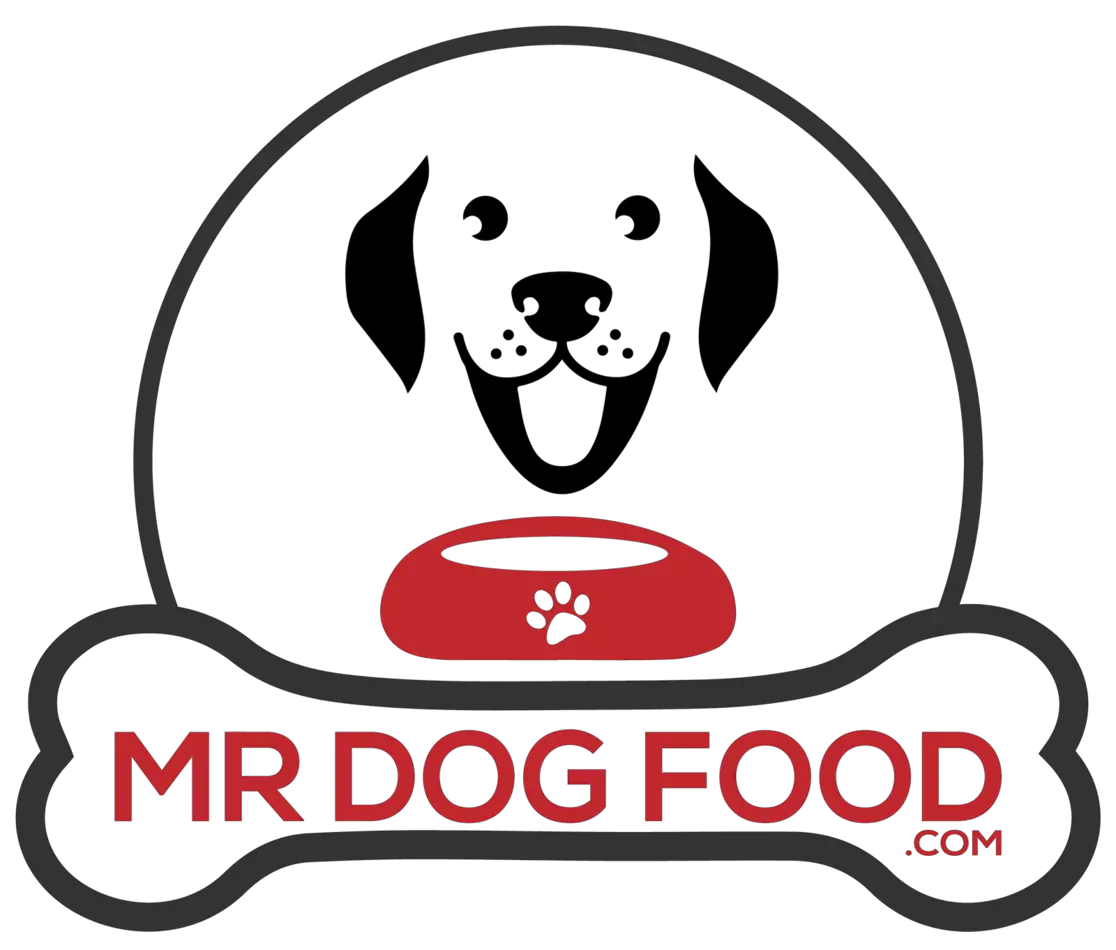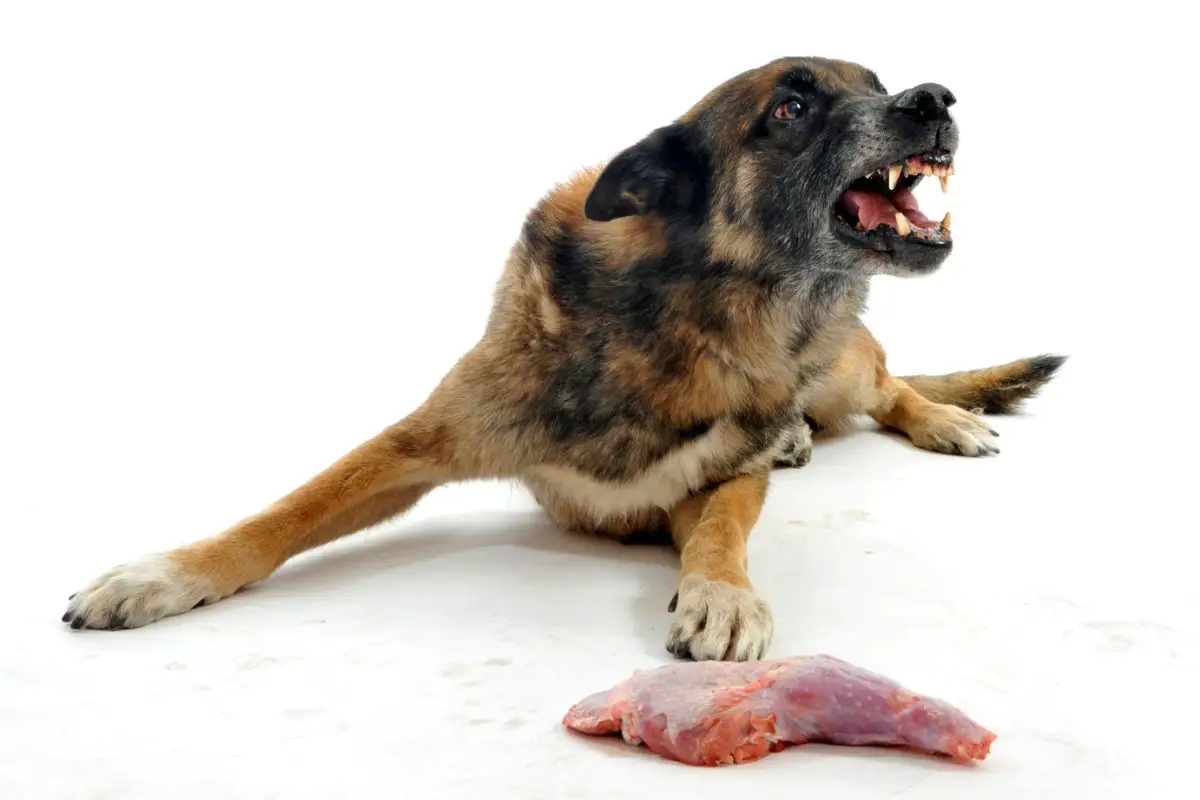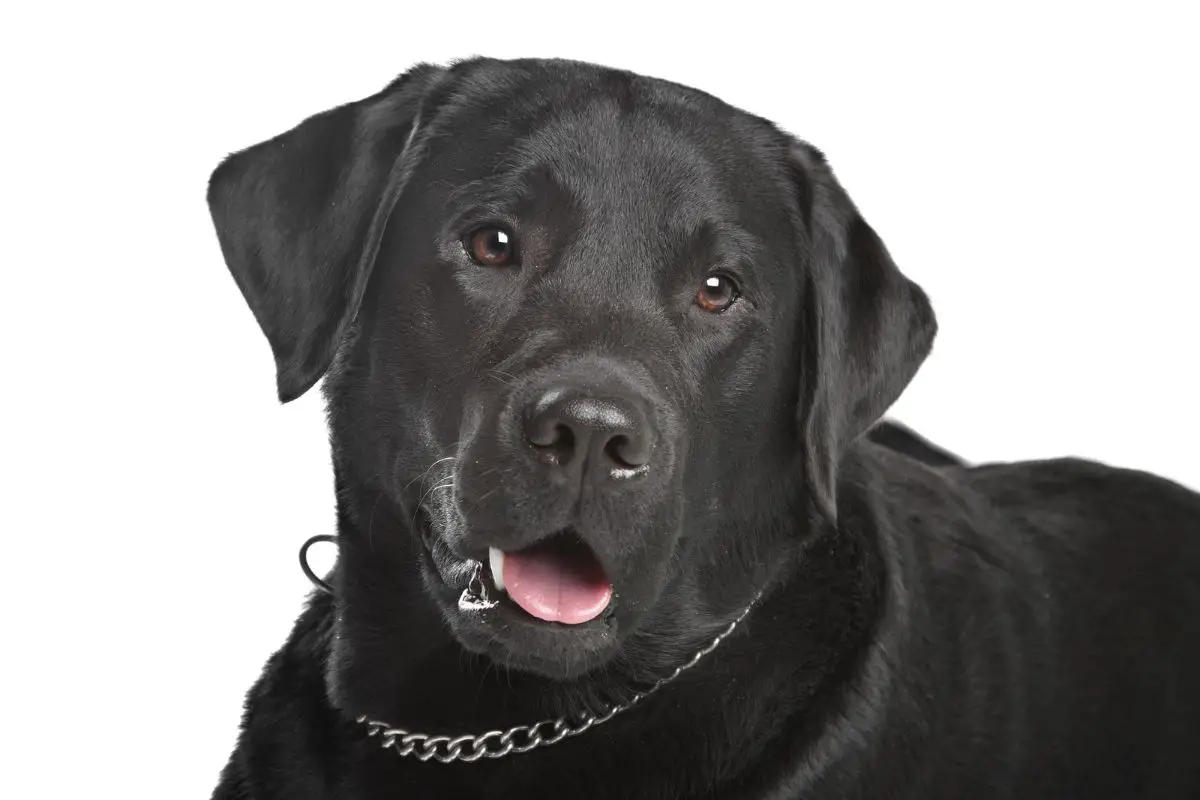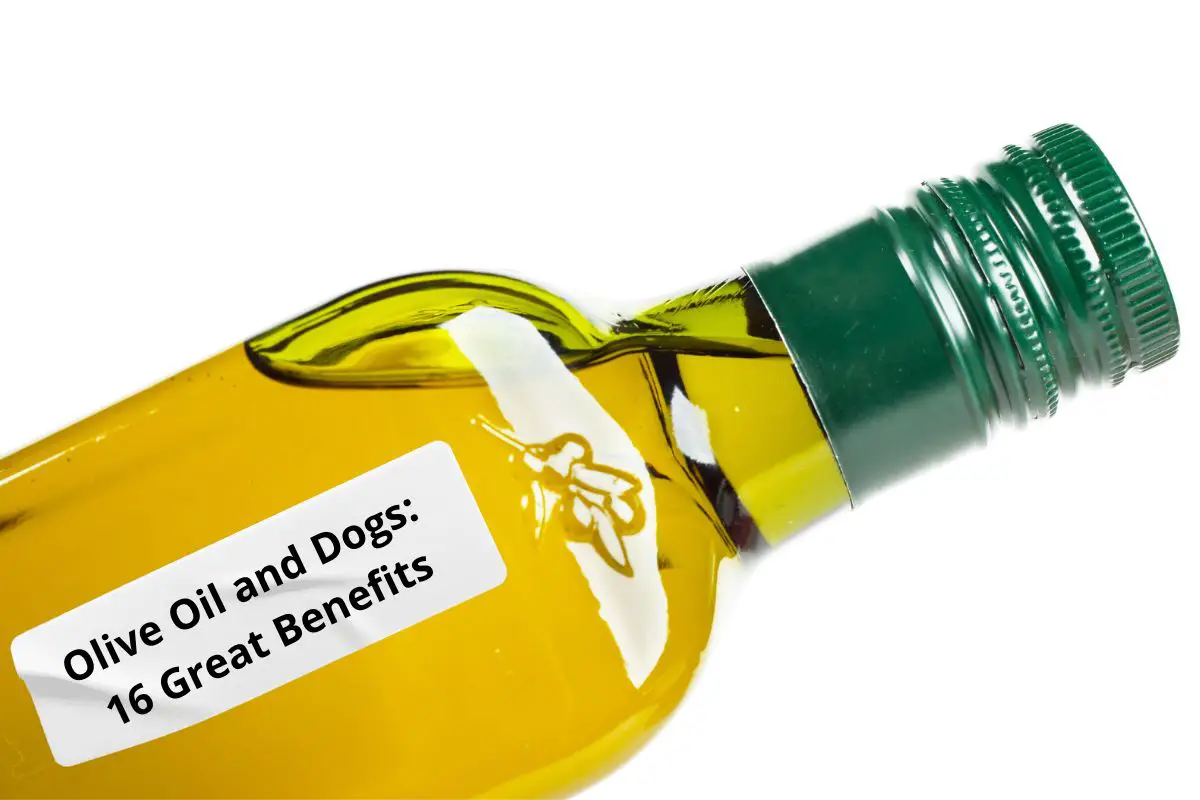This post contains affiliate links.
Dogs are the best, but sometimes they can be aggressive, especially regarding food. Luckily, there are ways to stop this behavior before it becomes a problem.
Here’s how to stop food aggression in dogs:
- Be consistent with meals.
- Don’t free-feed your dog.
- Don’t let your dog beg.
- Use a food puzzle.
- Feed your dog in a calm environment.
- Reinforce good behavior.
- Be patient and consistent.
- Cement your position as the alpha.
- Don’t be too aggressive with training.
- Seek professional help if needed.
So, let’s look at these steps and get into the details. I’ll teach you some simple ways to ensure that your dog respects you and other animals and doesn’t feel threatened during mealtimes.
Table of Contents
1. Be Consistent With Meals
Dogs thrive on routine. When it comes to mealtimes, feed your dog at the same time every day. Staying consistent will help them know when to expect their next meal and make them less likely to beg or be aggressive around food.
For example, if you usually feed your dog at 6:00 pm, stick to that schedule as closely as possible. If you need to deviate from the program, do so by only a few minutes.
Feeding your dogs twice a day is usually the best practice to ensure that they don’t get hungry between mealtimes. After all, we all know that the hungrier we are, the more we want food. So, keep your dogs from getting “hangry” by feeding them at the same time every day, twice a day.
2. Don’t Free-Feed Your Dog
When you free-feed your dog, you’re giving them access to food at all times. Free-feeding can create a sense of insecurity because they don’t know when their next meal will be. They may start hoarding food or become aggressive when someone comes near their bowl.
This is a lesson I learned the hard way. I used to free-feed my husky, and I had no issues, but things changed when we got our second husky.
The new dog is a rescue, and he was very food aggressive when we first got him. He would growl and snap at my other dog whenever she came near his bowl.
I did not expect this from him because I never had problems with feeding, but I learned that it’s because he was used to being in a situation where he had to protect his food. Because he was all grown up, this problem was harder to overcome.
Now, I portion out their food and feed them twice a day. This feeding practice has helped my rescue dog become less food aggressive, and it’s also helped the other dog not be as interested in his food.
So, please learn from my mistakes and don’t free-feed your pups! Instead, feed them on a schedule and put your dogs’ food down in different spots. Then, take up their bowls once they are done eating and move away from them.
3. Don’t Let Your Dog Beg
Begging can be a form of aggression, and it’s best to nip this behavior in the bud before things get worse.
Whenever you are eating, put your dog in another room or crate them. Keeping your dog away from your food will prevent them from begging and give them a sense of hierarchy, knowing that they are not in charge of the pack.
If your dog is already begging, the best thing is to ignore them. Don’t make eye contact, don’t talk to them, and don’t give them any attention.
If you give in, the dog will try to protect their food because they are unsure when the next “treat” will be. Your dog will also realize that you will give them what they want if they beg, and they will continue to do it.
Eventually, they will learn that begging is not a productive way to get food, and they will stop doing it. This strategy goes well with consistent meal times. If your dog knows when their next meal is, they will be less likely to beg because they know that food is coming.
4. Use a Food Puzzle
A food puzzle is a great way to stop food aggression in dogs. It gives them something to do with their food, making them work for their meal.
Using puzzles and slow feeding bowls is a great way to feed your dog because it will keep them busy and tire them out.
A food puzzle can be anything from a Kong toy to a treat ball, and there are many different options available, so you can find one that suits your dog’s needs.
I like to use a Kong toy for my dogs. It’s a little thing that you can stuff dog food inside, and they have to work to get it out.
This toy keeps them busy for about 30 minutes at mealtime, preventing them from gulping their food down too quickly. It’s a win-win for everyone involved.
5. Feed Your Dog in a Calm Environment
When you are feeding your dog, it’s essential to do it in a calm environment. That means there should be no other animals or too much human activity around. If your dog feels like their food is being threatened, they may become aggressive.
If you have more than one dog, it’s best to feed them in separate areas. This way, they won’t feel like their food is threatened, and they can eat in peace.
It’s also important not to make any sudden movements when you’re around your dog while they’re eating. Moving too quickly can startle them and make them think their food is in danger.
Mealtime tranquility is essential if you have a rescue dog. They may have had bad experiences and are more likely to be food aggressive.
6. Reinforce Good Behavior
When your dog behaves well, it’s important to reinforce that behavior. You can do this with treats, praise, or both.
Whenever your dog is eating calmly, give them a treat. Rewarding your dog will let them know that they are doing the right thing, and they will be more likely to do it in the future.
Here is a helpful YouTube video I found that uses this reinforcement technique:
When your dogs become calmer around food, you can start praising them instead of handing out treats. This lets them know that they are doing the right thing, and they will be more likely to do it in the future. So, offer some pets and smiles every time your dog does something right.
It’s also essential to use a calm voice when praising your dog. Using a loud voice may startle your pup and make them think they did something wrong.
However, praise usually works best after reinforcing good behavior with treats a few times.
7. Be Patient and Consistent
Whenever you’re training your dog, it’s essential to be patient and consistent. This is especially true when you’re trying to stop food aggression.
Dogs learn best through positive reinforcement, which means that you should praise them or give them a treat whenever they do something good. If they are being naughty, you should ignore them.
It’s also important to be consistent with your commands. If you tell your dog to “sit” and they don’t do it, make sure to keep repeating the order until they do it.
If you give up after a few tries, they will think they don’t have to listen to you and may continue to be food aggressive. So be patient and persistent when training your dog to foster a respectful and positive relationship.
8. Cement Your Position As the Alpha
It’s important to cement your position as the alpha in your pack. That means that you are the leader, and they should listen to you.
There are a few ways to do this:
- Make sure that you eat first: Dogs are natural scavengers. In the wild, dogs hunt in packs, and the alpha gets the first portion. So, if you eat first, your dog will understand that you are the alpha of the pack.
- Don’t let them jump on you: Dogs see jumping as a way to assert dominance. Don’t let them jump on you if you don’t want them to be dominant.
- Make them wait for you to go through doors first: Dogs like to lead the pack. If you make them wait for you to go through doors first, it will show that you’re the leader, and the dog will take you more seriously when trying to train them.
- Make eye contact: Dogs see eye contact as a challenge. Don’t look away first. If you can maintain eye contact with your dog, they will see you as the leader.
- Stay at a higher height than your dog: Dogs see height as a way to assert dominance. If you’re taller than them, they will see you as the leader, and that’s precisely how you want it.
- Don’t allow them to sniff freely during walks: Dogs like to sniff everything when they’re out for a walk. If you don’t allow them to do this, it will show that you’re the leader.
9. Don’t Be Too Aggressive With Your Training
When you’re training your dog, it’s essential not to be too harsh. Being harsh or aggressive to your dog will make them feel threatened by you, promoting food aggression. For this reason, you should also never use physical punishment when training your dog. That includes hitting, kicking, or anything else that could hurt them.
Physical punishment will only make your dog afraid, making them less likely to create a meaningful relationship with you. However, if the dog nibbles on you during training, make sure to yelp loudly. This high-pitched noise will startle your dog and communicate that the nipping is hurting you (even if it didn’t hurt).
It’s also important to be calm when you’re training your dog. If you get angry, the pet will get more worked up, and it will be harder to teach them.
In addition, aggression usually creates more aggression. Food-aggressive dogs aren’t protecting their food for nothing. On some level, they believe that someone will take their food from them. That means that whoever they lash out at is a threat, and if you become physically or emotionally aggressive, your dog won’t learn to trust you.
Try to keep calm if your dog lashes out at you, and never use physical punishment, even if you know that you aren’t hurting your dog. Instead, opt for positive reinforcement.
10. Seek Professional Help if Needed
If you’ve tried everything and your dog is still food aggressive, it’s essential to seek professional help. A professional trainer will be able to help you figure out why your dog is food aggressive and how to stop it.
They will also be able to give you more personalized tips on how to train your dog. The trainer can also help you figure out if any underlying medical issues could be causing the aggression. However, these are rare.
Expect to pay around $100 to $200 for a professional trainer. They will usually have a few sessions with you and your dog to help you establish hierarchy, communication, and discipline on both sides.
If you don’t want to engage a professional trainer, many books and websites can offer you advice on training your dog. Just make sure to do your research before trying anything new.
Conclusion
Food aggression is a serious issue that can be dangerous for you and your dog. If you’re having trouble stopping it, you can start with the tips above.
Also, remember to be patient and consistent with your training. Being consistent will send a strong message to the dog that you want them to behave in a certain way. The methods described in this article work on most dogs, but you should also seek professional help if you’re having trouble fixing the problem on your own.
Mrdogfood.com is a participant in the Amazon Services LLC Associates Program, an affiliate advertising program designed to provide a means for sites to earn advertising fees by advertising and linking to Amazon.com. We also participate in other affiliate programs which compensate us for referring traffic.




